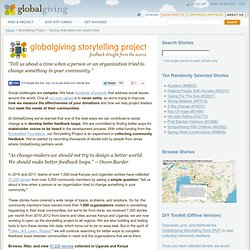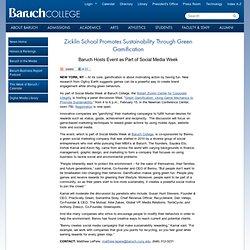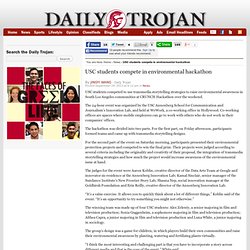

Digital Storytelling: A Creator's Guide to Interactive Entertainment - Carolyn Handler Miller. A Duke and UNC collaboration advancing science communication. The AAUGH Blog » Charlie Brown clears the air. You may have seen every Charlie Brown animation that has ever been on TV, but even that would leave you missing some special-purpose cartoons.

One example of this is the pollution-themed short created for the American Lung Association, “Charlie Brown Clears the Air” Now, I enjoy a good Peanuts animation, but I’m not a completist about them. What I am a completist about, however, is Peanuts publications, which is why I’m happy to announce the latest addition to the AAUGH.com reference library: the 32-page self-covered booklet Storyboard for the film “CHARLIE BROWN CLEARS THE AIR“. Published in 1979, this was presumably mostly to be used as either a preparation piece for people who would be showing the film, or a take-home piece for people who have seen it. The point of the cartoon itself is that pollution (including air pollution and littering) is bad, and that we should work to avoid creating them ourselves and keep an eye out for others who may be doing so. Storytelling - Turning Anecdotes into Useful Data. “Tell us about a time when a person or an organization tried to change something in your community.”

Social challenges are complex. We have hundreds of projects that address social issues around the world. One of our core values is to never settle, so we're trying to improve how we measure the effectiveness of your donations and how we help project leaders best meet the needs of their communities. At GlobalGiving we've learned that one of the best ways we can contribute to social change is to develop better feedback loops.
We are committed to finding better ways for stakeholder voices to be heard in the development process. “As change-makers we should not try to design a better world. In 2010 and 2011, teams of over 1,000 local Kenyan and Ugandan scribes have collected 57,220 stories from over 5,000 community members by asking a simple question: "tell us about a time when a person or an organization tried to change something in your community. " Get Involved. Carl Gets Some Rest: A Coloring and Story Book (EPA420-K-03-001) - 420k03001.pdf. Pollution. Zicklin School Promotes Sustainability Through Green Gamification. NEW YORK, NY – At its core, gamification is about motivating action by having fun.

New research from Ogilvy Earth suggests games can be a powerful way to create brand engagement while driving green behaviors. As part of Social Media Week at Baruch College, the Robert Zicklin Center for Corporate Integrity is hosting a panel discussion titled, “Green Gamification: Using Game Mechanics to Promote Sustainability,” from 4 to 6 p.m., February 15, in the Newman Conference Center, room 750. Registration is now open. Innovative companies are “gamifying” their marketing campaigns to fulfill human desires for rewards such as status, goods, achievement and reciprocity.
The discussion will focus on game-based marketing techniques to reward green actions by using mobile Apps, website tools and social media. “People inherently want to protect the environment – for the sake of themselves, their families, and future generations,” said Kamal, Co-founder and CEO of Bennu. USC students compete in environmental hackathon USC students competed to use transmedia storytelling strategies to raise environmental awareness in South Los Angeles communities at CRUNCH Hackathon over the weekend.

The 24-hour event was organized by the USC Annenberg School for Communication and Journalism’s Innovation Lab, and held at WeWork, a co-working office in Hollywood. Co-working offices are spaces where mobile employees can go to work with others who do not work in their companies’ offices. The hackathon was divided into two parts. For the first part, on Friday afternoon, participants formed teams and came up with transmedia storytelling designs. For the second part of the event on Saturday morning, participants presented their environmental protection projects and competed to win the final prize. “It’s a value exercise. The group’s design was a game for children, in which players build their own communities and raise their environmental awareness by planting, watering and fertilizing plants virtually.